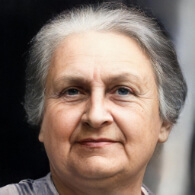Prepared Environment (Montessori)
In Montessori education, the Prepared Environment refers to a setting designed to facilitate independent learning and exploration by the child.[1] The environment, prepared by the adult, contains only the essential materials and tools for optimal development, removing any superfluous items. Key attributes of a prepared environment include order, reality, beauty, and simplicity.
The environment features child-sized furniture and materials to promote the children's independent functioning. A vital part of this prepared environment is the presence of a trained adult and a mixed-age group of children, which further enhances the child's development and social interaction.
Montessori Quotes
- "The first aim of the prepared environment is, as far as it is possible, to render the growing child independent of the adult."[2]
- "The environment must be rich in motives which lend interest to activity and invite the child to conduct his own experiences."[3]
Research and Critiques
- Pros: The prepared environment supports the Montessori principles of autonomy and self-directed learning. It allows children to learn at their own pace and according to their own interests. This kind of environment has been associated with positive outcomes in terms of cognitive and social development.[4]
- Cons: Critics argue that while the prepared environment promotes autonomy, it may not provide enough structure for all learners. Some children may require more direct instruction or may not learn effectively in a self-directed environment.[5]
Comparisons to Other Methods
Traditional education often takes place in a more structured environment where learning is largely adult-directed. In contrast, the Montessori prepared environment is designed to support self-directed, experiential learning and foster a sense of autonomy and competence.[6]
See Also
Glossary of Montessori Terms
The Glossary of Montessori Terms is a collection of specific terms and vocabulary that are related to the Montessori method of education, primarily focusing on the theory and practice for children aged 3 to 6. The jargon used by Montessori educators offers a unique insight into child development as discussed by Maria Montessori. The 'Montepedia Glossary of Montessori Terms' originated from a glossary that was compiled by the late Annette Haines from the Montessori Training Centre of St. Louis, at the request of Molly O'Shaughnessy from the Montessori Centre of Minnesota. The reason behind the creation of this glossary was to supplement O'Shaughnessy's lecture at the Joint Annual Refresher Course that took place in Tampa, Florida, in February 2001.[7] The glossary has since been expanded and updated with additional 'Montessori Terms'.
- 3-Hour Work Cycle
- Absorbent Mind
- Adaptation
- Adolescence
- Albums
- Advisor
- Analysis of Movement
- Casa dei Bambini
- Children of the Earth
- Children's House
- Choice
- Classification
- Concentration
- Concrete to Abstract
- Control of Error
- Coordination of Movement
- Cosmic Education
- Creativity/Imagination
- Cycle of Activity
- Development of the Will
- Deviations
- Didactic Materials
- Director
- Discipline from Within
- Earth Child
- Elementary Classroom
- Erdkinder
- Exercises of Practical Life
- False Fatigue
- Freedom of Choice
- Freedom within Limits
- Grace and Courtesy
- Great Stories
- Ground Rules
- Guide
- Help from Periphery
- Human Tendencies
- Imagination
- Independence
- Indirect Preparation
- Indirect Presentation
- Isolation of a Difficulty
- Intrinsic Motivation
- Job
- Kinderhaus
- Language Appreciation
- Language Acquisition
- Learning Explosions
- Materials
- Materialised Abstractions
- Mathematical Mind
- Maximum Effort
- Mixed Ages
- Montessori Materials
- Nido
- Montessori Materials
- Normalization
- Obedience
- Peace
- Personality
- Planes of Development
- Points of Interest
- Practical Life
- Phonemic Awareness
- Phonics Instruction
- Phonological Awareness
- Prepared Environment
- Presentation
- Primary Classroom
- Psychic Embryo
- Reading Comprehension
- Repetition
- Respect
- Self-Discipline
- Self-Regulation
- Sensitive Periods
- Sensorial Materials
- Simple to Complex
- Socialization
- Society by Cohesion
- Sound Games
- Three-Hour Work Cycle
- Valorisation
- Vocabulary Enrichment
- Work
Please help to translate this page into your local language
References
- ↑ Montessori, M. (1966). The Secret of Childhood. Ballantine Books.
- ↑ Montessori, M. (1967). The Discovery of the Child. Ballantine Books.
- ↑ Montessori, M. (1949). The Absorbent Mind. Clio Press.
- ↑ Lillard, A. (2017). Montessori: The Science Behind the Genius. Oxford University Press.
- ↑ Egan, K. (2002). Getting it wrong from the beginning: Our progressivist inheritance from Herbert Spencer, John Dewey, and Jean Piaget. Yale University Press.
- ↑ Mooney, C. (2013). Theories of Childhood, Second Edition: An Introduction to Dewey, Montessori, Erikson, Piaget & Vygotsky. Redleaf Press.
- ↑ Haines, A. (2001). Glossary of Montessori Terms. Montessori Training Centre of St. Louis.
